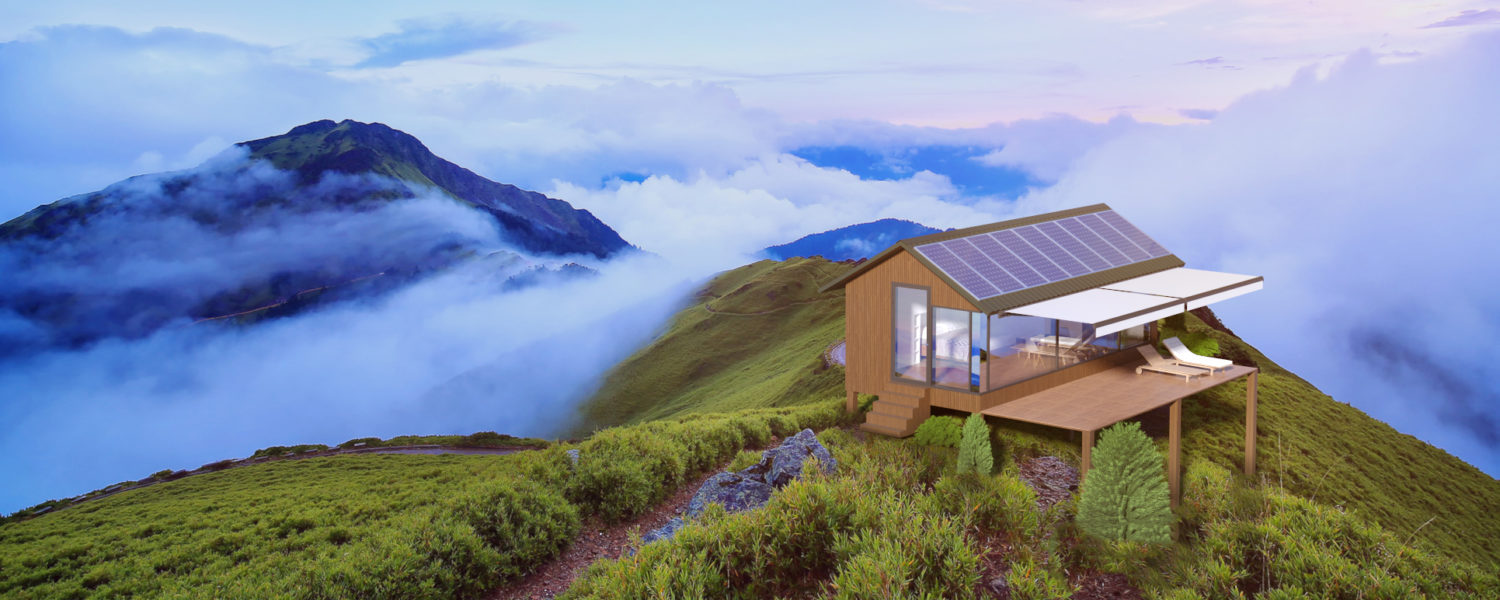
Building a house by hand can be both time-consuming and expensive. Some homebuilders have chosen to automate part of the construction instead.
A new Ukrainian homebuilding startup called PassivDom uses a 3D printing robot that can print parts for tiny houses. The machine can print the walls, roof, and floor of PassivDom’s 410-square-foot model in about eight hours. The windows, doors, plumbing, and electrical systems are then added by a human worker.
When complete, the homes are autonomous and mobile, meaning they don’t need to connect to external electrical and plumbing systems. Solar energy is stored in a battery connected to the houses, and water is collected and filtered from humidity in the air (or you can pour water into the system yourself). The houses also feature independent sewage systems.
Since the startup launched in spring 2017, it has received more than 8,000 preorders in the United States for its homes, which start at $64,000. The first 100 ones will be delivered in January 2018.
Check out the homes below.
PassivDom’s smallest model measures 410 square feet and ranges from $64,000 to $97,000, designer Maria Sorokina told Business Insider.
The 775-square-foot model ranges from $97,000 to $147,000.
Here’s what the house looks like when you walk in the front door. It’s a large open space with a small kitchen and floor-to-ceiling windows.
This model doesn’t include a separate bedroom, which means residents need a sleeper sofa. A small bathroom is located near the kitchen.
PassivDom can make custom models as well. The premium models come with furniture, a kitchen, a bathroom, engineering systems, an energy supply, a water tank, and a sewage system.
The homes also offer the possibility of living off the grid.
“We should have opportunities to live in nature away from civilization, but have comfortable conditions of a traditional house,” Sorokina said. “This technology can allow us to live in the woods, on mountains, or on the shore — far away from people and infrastructure.”
To make a PassivDom home, the team maps out the plan for the 3D printer in its factories in Ukraine and California. Layer by layer, the seven-axel robot prints the roof, floor, and 20-centimeter-thick walls, which are made of carbon fibers, polyurethane, resins, basalt fibers, and fiberglass.
Depending on the model, the whole process can take under 24 hours. The design and production of larger houses with more specifications and finishes, like the one below, can take up to a month. If a house is pre-made, it can be shipped the next day.
PassivDom is not the only company using 3D printing to build homes. The San Francisco-based housing startup Apis Cor, Dus Architects in Amsterdam, as well as Branch Technology from Chattanooga, Tennessee, say they can construct homes in mere days or weeks.
The startup believes 3D printing is a cheaper, more efficient way to build homes that it can sell at a (relatively) affordable price. “Over 100 million people do not have a roof over their heads,” Sorokina said. “It is necessary to build more affordable houses.”
Avots: Futurism